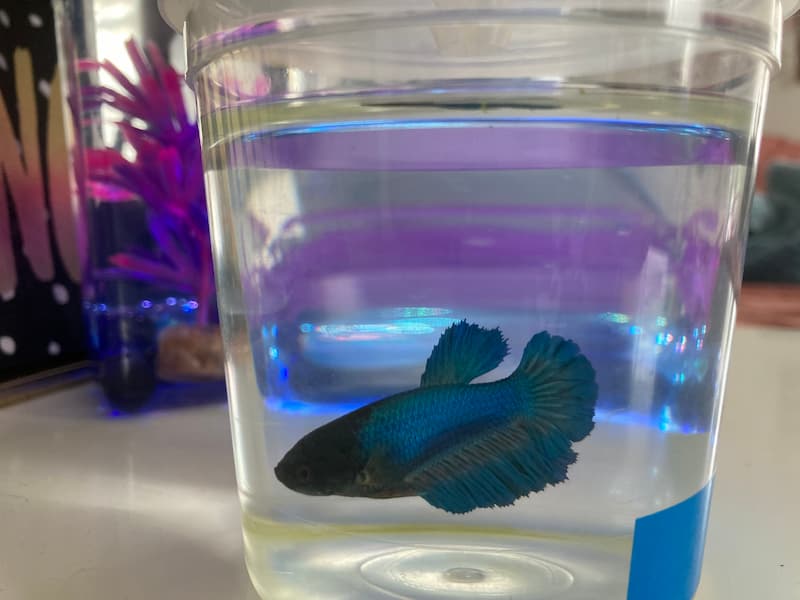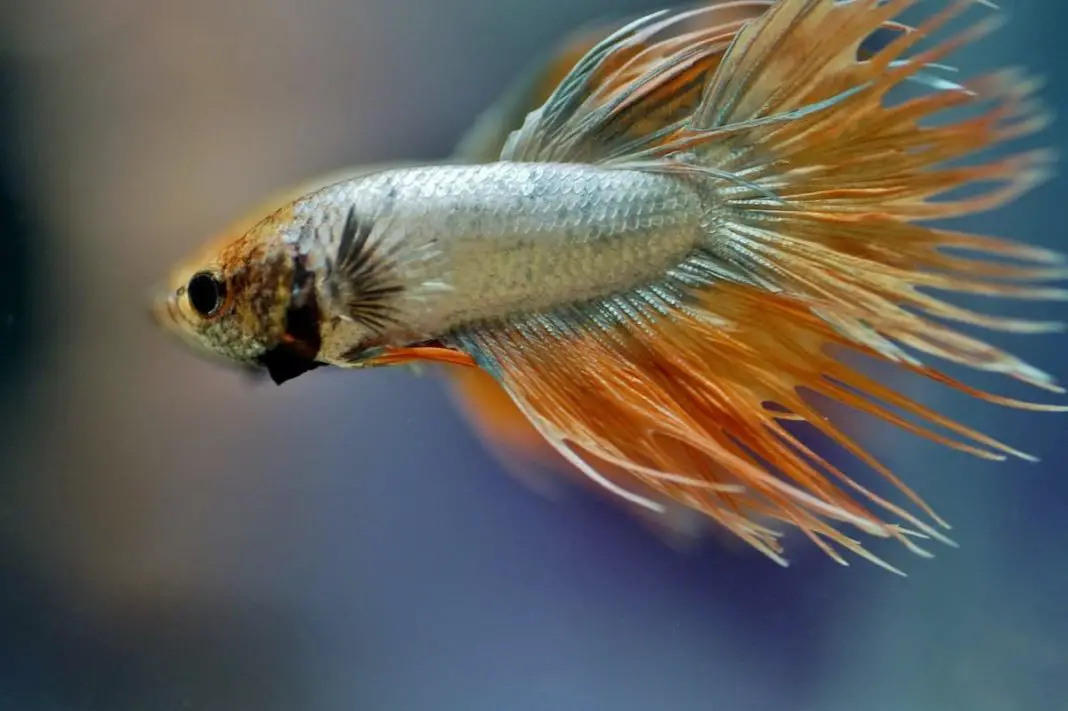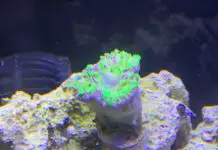Why Do Pet Stores Keep Bettas In Cups?
You were at the pet shop and saw some betta fish in cups. However, all the other fish were in proper tanks, but why? Many pet shops tell customers that they can live in tiny places like bowls. You put your betta fish in a bowl because the pet employee told you so, however, bowls make them miserable and most likely die and not live their full life expectancy.
A bowl is a very harsh place for ANY fish to live in. Imagine yourself in an automobile, but with all the seats removed and you have nowhere to go to the bathroom.
Betta fish shouldn’t live without a heater, as the water becomes ice cold to them. Now, imagine you’re living there for your whole life. Think about a betta that’s kept in a little vase with a cute little plant in it. How would you feel living in a freezing car… that’s how a betta feels when they’re kept in a small cup.

The Truth About Bettas That Are Kept In Cups
Colourful betta fish are a very popular starter fish. Often, pet stores market these vibrant swimmers as being easy to care for because they’re small—they take up minimal space—and are inexpensive to care for.
However, proper betta care is a bit more specialized than a lot of pet stores would make you believe. While their vibrant appearance can make them popular for display, they’re actually one of the most exploited fish in the aquarium trade.
Bettas should really be kept in a minimum of 5 gallons, and only one at a time. The main reason why pet stores sell betta fish in cups is because it takes up the least amount of space possible instead of providing a 5-gallon tank for each betta. Another reason is that it costs the least amount of money to ship bettas, as they ship them in tiny bags. Sadly, most bettas die before reaching their destination. Unfortunately, many pet stores mark them as low-maintenance fish, which simply isn’t true. It’s important to note that buying them in a cup doesn’t mean that they can live in small spaces, and it doesn’t mean that they’ll live a healthy, happy life in a bowl just because it’s larger than a cup.
What To Consider When Buying A Betta Fish
If you’re thinking of getting a betta, you need to put a little thought into what kind of tank is right for them. As previously mentioned, a betta should be kept in at least five gallons for each fish. If you expect to add tankmates later on for your betta, you’ll need an even larger tank.
Betta fish are actually tropical fish that require lots of swimming space and proper water conditions. They need to have clean, filtered water that maintains a consistent temperature of around 75–80˚F. Bettas also need hiding spots so they can feel secure when they need to, and they also require a slow current that doesn’t push them around the tank.
Betta Fish Are Tropical Fish!
The first thing to know is that betta fish are tropical fish, just like neon tetras, platies or Angelfish. This means they require the correct living conditions in order to thrive, and anything less will gradually (or perhaps rapidly) lead to their demise.
The only difference is that they have adaptations that allow them to survive in situations where most other fish couldn’t. They’re anabantids, meaning they can take oxygen from above the water surface as well as breathe through their gills like other fish. When in the wild, they have the unique ability to survive droughts by living in stagnant, muddy puddles.
This is why people erroneously believe that bettas are best kept in very small tanks, plant vases, cubes, cups and other ridiculous living situations where they would never try to keep another fish. It’s one of many myths about betta fish that they prefer these types of environments. So, just because a betta can survive such conditions doesn’t mean they should.
Remember that in the wild, an animal only needs to survive long enough to breed in order to be successful. So, if you only hope that your betta experiences the short and difficult life of a wild betta during a drought, then by all means, keep it in the worst possible conditions and wish it luck. However, if you want your betta to live a long and healthy life, then you need to strive for ideal conditions.
Tropical Fish Like Bettas Require Proper Filtration
Water that’s clean and healthy is extremely important for tropical fish, and a decent filtration system is vital, even for betta fish. There are some very small tanks that come with air pumps as filters, with the intention of creating some kind of under-gravel system. The truth is that this simply isn’t good enough for keeping the water clean, especially in such a tiny tank.
Although nano filters are available for smaller tanks, one-gallon tanks have very little room for such a filter. Even with that, betta fish do best with low-flow filtration systems, and an aftermarket filter that pushes them around the tank isn’t good for their stress levels.
When the owner doesn’t have a filter for a small tank, you need to commit between doing full water changes and cleanings weekly, or partial water changes where a little debris is left in the tank. Neither is the optimal choice. Of course, leaving excess waste and food in the tank can quickly pollute the water, even after a partial water change.
The problem with full water changes is that the microbe colonies in your tank never have a chance to establish themselves. An example of a healthy tank is when the microbes help to process the waste in your tank and they do a great deal to keep the water clean. Without microbes, waste chemicals in the tank can quickly skyrocket.
In short, problems can be made much more manageable if you choose a tank that’s capable of having a proper filtration system.
Betta Fish Require Warmer Water
As bettas are tropical fish, they require water in the 75-80 degree range. This means that you’ll need a reliable heater for your tank. The problem with small tanks is that they typically don’t come with heaters, meaning the tank temperature is governed by the surrounding air temperature. Although, if you live somewhere where the temperature is always at least 75 degrees, you may be fine.
As previously mentioned, this means you’re putting your betta under stress by exposing it to freezing water temperatures. While a drop to 65 degrees at night mightn’t seem like much to me or you, for a betta that thrives in warmer water, it is very stressful. Even if it’s warm in the daytime, at night the temperature in a one-gallon will drop almost as quickly as the air temperature.
The good news is that there are some nano heaters and small heaters designed for smaller tanks. Although you should use them with caution in any tank, that’s under five gallons. You’ll need to monitor your water temperature closely to make sure they aren’t raising it too much. Just as cold water can be stressful or deadly for bettas, so too can water that’s too warm.
When it comes to tropical tanks, the larger the tank, the easier it is to maintain the water temperature. When using a tiny one-gallon tank, the decks are stacked against you, and your betta will suffer as a result.
Tropical Fish Like Bettas Need Room To Swim
Would you keep your pet dog in a closet? If you fed him and took him for a walk a couple of times a day, he’d probably be fine, right? Perhaps even adding a glass door for the closet so you can see him in here.
Of course, you wouldn’t do that. It would be very cruel, and all but the most disturbed individuals would agree it is unethical. However, many of the same otherwise intelligent people consider it okay to keep a betta in a tank where it barely has enough room to turn around.








